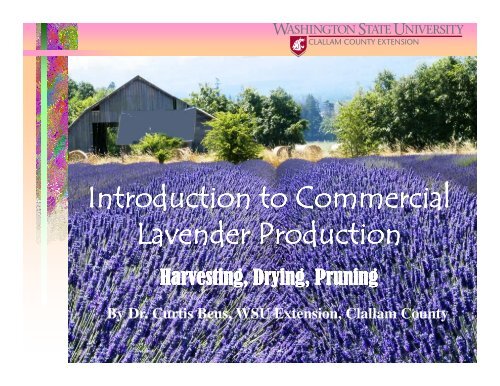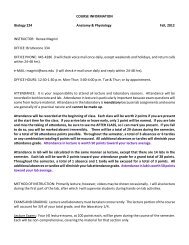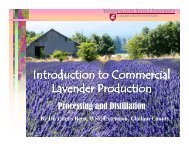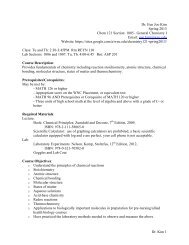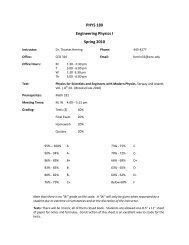Lavender Harvesting
Lavender Harvesting
Lavender Harvesting
Create successful ePaper yourself
Turn your PDF publications into a flip-book with our unique Google optimized e-Paper software.
Introduction to Commercial<br />
<strong>Lavender</strong> Production<br />
<strong>Harvesting</strong>, Drying, Pruning<br />
By Dr. Curtis Beus, WSU Extension, Clallam County
<strong>Harvesting</strong> <strong>Lavender</strong>
<strong>Harvesting</strong> <strong>Lavender</strong><br />
Never harvest lavender when wet<br />
• If harvesting lavender for producing dried<br />
bundles, harvest stems when the first few<br />
flowers have bloomed.<br />
• If harvesting lavender for producing dried<br />
lavender flower buds, harvest when about<br />
half of the buds are in bloom<br />
• If harvesting lavender for fresh bundles,<br />
harvest when about 20% to 50% of buds<br />
are in bloom<br />
• If harvesting lavender for oil production,<br />
harvest at full bloom, or when up to half of<br />
the blooms have withered<br />
• Small scale growers typically harvest by<br />
hand with a curved sickle/knife, and tie<br />
bundles together with a rubber band<br />
• Larger growers who grow for oil<br />
production use various mechanical<br />
harvesters
A group of<br />
inexperienced<br />
lavender harvesters<br />
– not doing the best<br />
of jobs!
<strong>Harvesting</strong> <strong>Lavender</strong> Efficiently and for Quality<br />
Firmly grasp a<br />
bunch of stems at<br />
their base
<strong>Harvesting</strong> <strong>Lavender</strong> Efficiently and for Quality<br />
Use sickle knife and<br />
quickly pull it at<br />
base to cut off<br />
bunch – may need<br />
to make 2-3 cuts to<br />
complete a bundle
<strong>Harvesting</strong> <strong>Lavender</strong> Efficiently and for Quality<br />
Use rubber bands<br />
around the wrist to<br />
tie off bundle
<strong>Harvesting</strong> <strong>Lavender</strong> Efficiently and for Quality<br />
Pile cut bundles<br />
on top of<br />
harvested plants
And experienced<br />
harvester can<br />
harvest one plant in<br />
about 3-5 minutes –<br />
about 4-7 bundles<br />
per plant depending<br />
upon size of plant
Drying <strong>Lavender</strong><br />
Paper clip<br />
Rubber band<br />
• Effective drying is absolutely<br />
critical to producing quality<br />
lavender products!<br />
• <strong>Lavender</strong> needs to be dried in<br />
a dark, dust- free place with<br />
good ventilation to allow for<br />
quick and complete drying.<br />
• Too humid conditions and/or<br />
poor air movement will result in<br />
moldy lavender<br />
• Light—especially sunlight—<br />
will cause lavender to fade and<br />
turn gray
Pruning <strong>Lavender</strong><br />
This is what happens if<br />
lavender is not pruned!<br />
• After harvest, plants need to be pruned and shaped. This<br />
should be done before the first hard frost<br />
• Cut plants back to leave 1-2 inches of green beyond woody<br />
stems (try to leave 2-3 nodes of the current season’s wood)<br />
• <strong>Lavender</strong> needs to be pruned back hard, or plants will<br />
become too large, woody and will splay open in the middle
This is NOT the way<br />
to efficiently prune<br />
lavender!
A typical plant after harvest<br />
OK, I harvested this one way early for the purpose of demonstration
Using a gas hedge trimmer to prune<br />
Takes about 1-2 minutes per plant
A properly pruned plant
A properly pruned plant<br />
Leaving about 1” of green growth above old wood
Properly pruned lavender will withstand winters<br />
better, will last longer, be healthier and produce<br />
more quality product<br />
Note the fans for air movement


